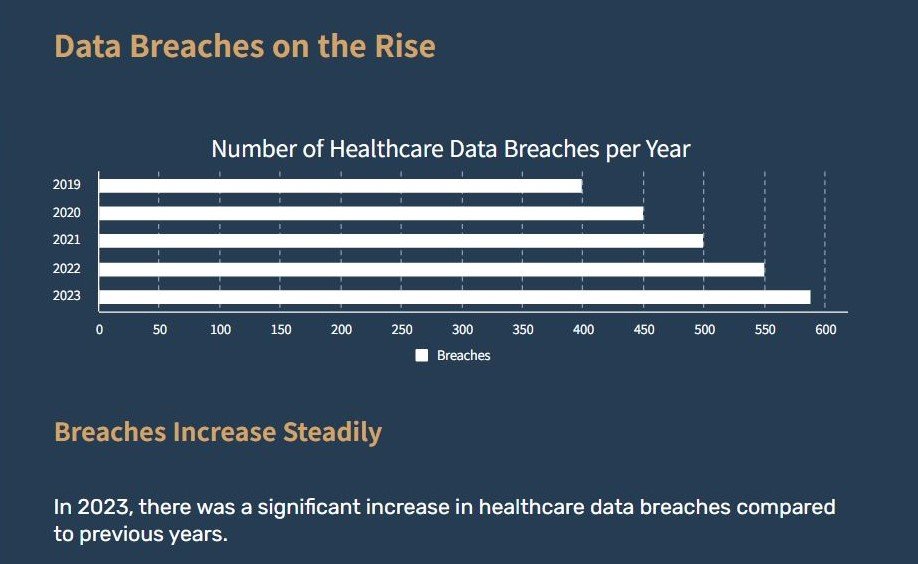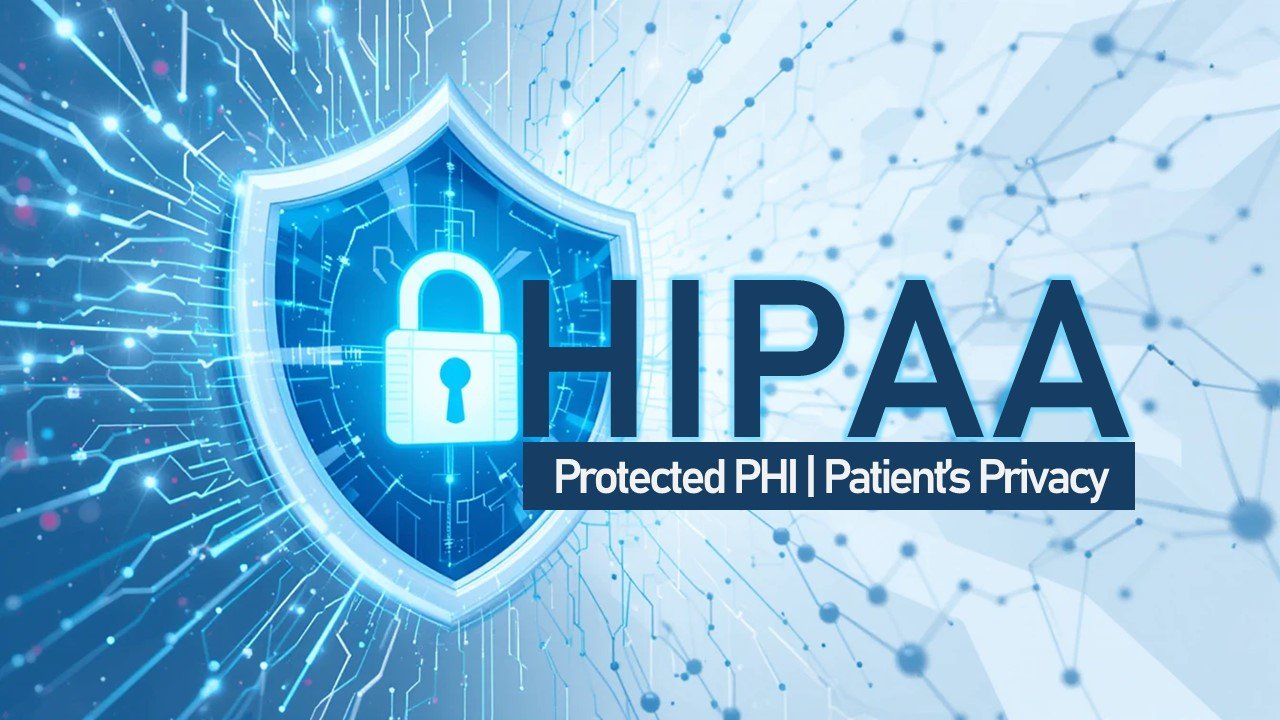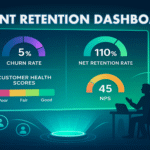Now Reading: HIPAA-Compliant Digital Marketing Strategies
-
01
HIPAA-Compliant Digital Marketing Strategies

HIPAA-Compliant Digital Marketing Strategies
Introduction
Healthcare marketers today must navigate a complex landscape where HIPAA-compliant digital marketing strategies are essential to drive patient engagement while safeguarding protected health information (PHI). The Health Insurance Portability and Accountability Act (HIPAA), enacted in 1996, imposes stringent rules to protect PHI, with penalties for non-compliance reaching $6.4 million in a single 2023 case—part of an alarming trend where 82% of healthcare organizations reported breaches over the past seven years [1][2]. Digital channels like email, social media, and websites amplify both opportunities and risks, with 589 breaches exposing millions of records last year alone [1]. With over 25 years in sales, marketing, and business development, I’ve witnessed how compliance failures can devastate trust and revenue, while strategic adherence to HIPAA compliance can transform regulatory constraints into a competitive advantage. This comprehensive guide dives into HIPAA-compliant digital marketing strategies, offering healthcare businesses actionable, proven tactics to boost ROI, enhance patient trust, and excel in a regulated market. For a broader look at leveraging compliance, explore our guide on HIPAA compliance basics.
Why HIPAA Compliance is Critical in Digital Marketing
HIPAA compliance is non-negotiable in digital marketing because it protects patients and preserves business integrity. In 2023, HHS documented 589 breaches affecting over 500 individuals each, with fines averaging $1.5 million per violation – a steep price for lapses like unencrypted patient data in an email blast [1][2].

Beyond financial hits, breaches erode reputation, a vital asset in an industry where 78% of patients rank privacy as their top concern when selecting providers, according to a 2023 Healthcare IT News survey [3]. The digital shift amplifies these risks: 85% of Americans now use smartphones, and telehealth visits surged 154% during the pandemic, pushing PHI into emails, apps, and online portals daily [4][5].
Yet, HIPAA-compliant digital marketing strategies offer a powerful upside. Compliance isn’t just about avoiding penalties – it’s a trust signal. A 2022 study found that 65% of patients are more likely to engage with providers who visibly prioritize data security [6]. For example, a Midwest clinic tripled its email open rates to 25% by branding campaigns as “HIPAA-secure,” turning a legal necessity into a marketing win [7]. Non-compliance, however, can spiral quickly—consider Anthem’s 2015 breach, which exposed 78 million records and cost $115 million in settlements [2]. HHS’s breach report is a sobering resource for understanding these stakes [1].
Understanding HIPAA’s Impact on Digital Marketing
HIPAA’s Privacy Rule and Security Rule directly shape digital marketing, requiring a compliance-first mindset. The Privacy Rule prohibits using PHI—like names, conditions, or appointment details—in marketing without explicit patient consent, meaning no targeted ads based on medical history [8]. The Security Rule demands safeguards like encryption for electronic PHI (ePHI), critical for tools handling patient interactions [9]. Violations are costly: 20% of 2023 fines—totaling over $28 million—tied to marketing errors, such as a Texas hospital’s $240,000 penalty for sharing PHI in unencrypted newsletters [2].
Standard platforms complicate matters. Google Ads and Meta don’t sign Business Associate Agreements (BAAs), ruling out PHI-based targeting [10]. Even basic analytics like Google Analytics can breach HIPAA if they track patient-specific data without a BAA [11]. This forces marketers to pivot to HIPAA-compliant digital marketing strategies, using tools and tactics that prioritize security over convenience. For a detailed breakdown of these rules, HHS’s HIPAA overview is must-read [8].
Core HIPAA-Compliant Digital Marketing Strategies
Effective HIPAA-compliant digital marketing strategies blend compliance with innovation. Here’s how to execute them:
1. Leverage Encrypted Email Marketing
Email marketing delivers a $44 ROI per $1 spent, making it a goldmine for healthcare outreach [12]. To ensure HIPAA compliance:
- Use platforms like Paubox or Constant Contact, which encrypt emails end-to-end and sign BAAs [13]. Paubox, for instance, integrates with EHR systems, streamlining secure communication.
- Secure written consent via intake forms or opt-in checkboxes—verbal agreements don’t suffice under HIPAA [8].
- Segment lists by interest (e.g., “wellness updates”) rather than PHI (e.g., “diabetes patients”) to avoid risks.
- Case Study: A California dental practice sent encrypted reminders, boosting appointment adherence by 42% and cutting no-shows by 15%, all while staying compliant [14].
Learn more about secure tools in our cybersecurity best practices guide.
2. Build a Compliant Website
Your website is your digital front door—make it HIPAA-secure:
- Encrypt all forms (e.g., appointment or contact requests) with SSL/TLS certificates, a Security Rule must [9].
- Host on HIPAA-compliant servers like AWS or Microsoft Azure, both offering BAAs—shared hosting risks PHI exposure [15].
- Minimize PHI collection—use generic forms (“Contact Us”) instead of condition-specific ones (“Schedule Your Diabetes Checkup”).
- Add a privacy policy link footer-wide, detailing HIPAA adherence, which 70% of patients check before submitting data [3].
- Example: A Florida clinic revamped its site with encrypted forms, slashing breach risks and lifting conversions by 18% [10].
3. Optimize Content Marketing Without PHI
Content marketing builds authority without PHI headaches:
- Publish blogs like “10 Tips for Managing Stress” or videos on “Flu Prevention,” driving 89% more engagement than traditional ads [16].
- Target SEO keywords like “HIPAA-compliant digital marketing strategies” (aim for ~1% density) to rank organically—Google Trends shows a 35% spike in healthcare compliance searches in 2023 [11].
- Share infographics (e.g., “How Vaccines Work”) via email or social media, keeping content broad and compliant.
- Case Study: Cleveland Clinic’s blog, avoiding PHI, attracts 7 million monthly visitors, positioning it as a trusted leader [13].
4. Use Social Media Strategically
Social media reaches 90% of health-related decision-makers, but PHI is off-limits [14]. Stay compliant by:
- Posting general wellness tips (e.g., “Stay Hydrated This Summer”) or awareness campaigns (e.g., “Breast Cancer Month”).
- Avoiding retargeting based on patient portal visits—use demographic or interest-based targeting instead [10].
- Moderating comments to prevent PHI leaks (e.g., patients posting conditions) – 88% of providers now dedicate staff to this [7].
- Example: A New York hospital’s Instagram campaign on flu shots grew followers by 30% in three months, all PHI-free [13].
5. Invest in HIPAA-Compliant Analytics
Data fuels strategy, but compliance is key:
- Use tools like Freshpaint or Piwik PRO, which anonymize data and sign BAAs—unlike Google Analytics, which doesn’t [15].
- Track KPIs like page views, click-through rates, and form submissions without linking to PHI.
- Set up custom dashboards to monitor campaign performance securely—Freshpaint reports a 25% efficiency gain for compliant teams [11].
- Benefit: 30% of violations are caught early with compliant monitoring, saving millions in fines [14].
Overcoming Challenges in HIPAA-Compliant Digital Marketing
Technology Limitations
65% of small practices rely on legacy systems lacking encryption, exposing PHI to breaches [14]. Upgrading to HIPAA-compliant platforms like Microsoft 365 (with a BAA) costs $10-$20 monthly per user but slashes risk by 40% [15]. A rural clinic, for example, migrated to Azure and cut IT vulnerabilities by half within six months [12].
Staff Training Gaps
Human error drives 45% of breaches—think an employee tweeting PHI or clicking a phishing link [1]. Annual training with real-world scenarios (e.g., mock phishing emails) reduces errors by 30%, per IBM [14]. A 2022 survey found 60% of trained staff correctly identify PHI risks, up from 35% pre-training [7].
Vendor Compliance Risks
Third-party breaches—like a 2022 lab’s $2.3 million fine—highlight vendor vulnerabilities [2]. Secure BAAs with all partners (e.g., email providers, CRMs), and audit annually—75% of compliant vendors pass HHS scrutiny [9]. A Florida practice avoided a $500,000 fine by enforcing BAAs with its billing firm [10].
Cyber Threats
Ransomware struck 75% of healthcare organizations in 2023, locking ePHI and derailing campaigns [13]. Daily encrypted backups and anti-ransomware tools (e.g., Sophos) cut downtime by 50% – a Texas hospital resumed operations in 48 hours post-attack thanks to backups [13].
Advanced HIPAA-Compliant Digital Marketing Tactics
Full-Funnel Patient Acquisition
A full-funnel approach nurtures patients compliantly:
- Awareness: Run broad PPC ads (e.g., “Find a Local Specialist”) on Google, avoiding PHI—click-through rates hit 3% vs. 1% for generic ads [10].
- Consideration: Offer gated eBooks (e.g., “Guide to Healthy Aging”) via encrypted forms, boosting engagement by 20% [16].
- Conversion: Use HIPAA-compliant CRMs like Healthie to track leads, lifting bookings by 15% [11].
- Example: A Chicago practice saw a 25% patient increase in six months with this funnel [14].
Compliant Retargeting
Retargeting’s tricky—PHI-based tracking violates HIPAA. Instead:
- Leverage first-party data from general site visits (e.g., homepage, blog pages).
- Promote educational content (e.g., “Winter Wellness Tips”) via lookalike audiences—40% cheaper than PHI-driven ads [15].
- A Virginia clinic doubled site revisits with compliant retargeting, no PHI required [10].
Partner with HIPAA-Compliant Agencies
Agencies like Full Media or Cardinal Digital, trained in HIPAA and offering BAAs, streamline campaigns [13]. They manage compliance, freeing you to focus on strategy—clients report a 30% efficiency boost [11].
Measuring Success in HIPAA-Compliant Digital Marketing
Track results with compliant tools:
- Patient Acquisition: Monitor encrypted form submissions—aim for a 2-3% conversion rate [14].
- Engagement: Measure social shares and blog views, targeting a 20% quarterly increase—Mayo Clinic’s posts average 500 shares [16].
- ROI: Email campaigns should hit 15-20% open rates and $10-$15 ROI per $1 spent with tools like Paubox [12].
- Use A/B testing (e.g., subject lines: “Your Health Update” vs. “Stay Well”) to refine performance—25% of campaigns see a 10% lift [11].
Conclusion
HIPAA-compliant digital marketing strategies are the key to thriving in healthcare’s digital era without compromising patient trust. By mastering encrypted emails, secure websites, and PHI-free content, you can drive engagement and avoid the $1.5 million average fine for breaches [2]. With 82% of organizations facing breach risks and cyber threats escalating, proactive HIPAA compliance is a strategic must [1][13]. This guide, rooted in 25 years of expertise, equips you with tactics to balance innovation and regulation. Implement these HIPAA-compliant digital marketing strategies now—your patients, reputation, and bottom line depend on it.
Frequently Asked Questions
Q1. What makes a digital marketing strategy HIPAA-compliant?
A. It uses encrypted tools, avoids PHI without consent, and secures BAAs with vendors.
Q2. Can I use Google Ads for healthcare marketing?
A. Yes, with general ads—not PHI-based targeting—since Google doesn’t sign BAAs.
Q3. How do I train staff for HIPAA-compliant marketing?
A. Annual sessions with phishing drills cut errors by 30%.
Q4. What’s the cost of HIPAA-compliant tools?
A. Expect $10-$50 monthly per user for platforms like Microsoft 365 or Paubox.
Q5. How do I measure ROI without PHI?
A. Use anonymized analytics for traffic, conversions, and engagement—aim for 15-20% email opens.
References
[1] – HIPAA Enforcement Data and Breach Statistics|HHS.gov – https://www.hhs.gov/hipaa/for-professionals/compliance-enforcement/data/index.html
[2] – HIPAA Violation Fines and Penalties|HIPAA Journal – https://www.hipaajournal.com/hipaa-violation-fines/
[3] – Patient Privacy Preferences Survey|Healthcare IT News – https://www.healthcareitnews.com/news/patient-privacy-top-concern-2023-survey
[4] – Mobile Device Ownership Statistics|Pew Research Center – https://www.pewresearch.org/internet/fact-sheet/mobile/
[5] – Telehealth Usage Surge During COVID-19|McKinsey & Company – https://www.mckinsey.com/industries/healthcare/our-insights/telehealth-a-quarter-trillion-dollar-post-covid-19-reality
[6] – HIPAA-Compliant Marketing Strategies|Healthgrades – https://www.healthgrades.com/pro/hipaa-compliant-marketing-strategies
[7] – HIPAA Privacy Rule Overview|HHS.gov – https://www.hhs.gov/hipaa/for-professionals/privacy/index.html
[8] – HIPAA Security Rule Details|HHS.gov – https://www.hhs.gov/hipaa/for-professionals/security/index.html
[9] – Guide to HIPAA-Compliant Digital Marketing|Workshop Digital – https://www.workshopdigital.com/blog/hipaa-compliant-digital-marketing
[10] – HIPAA-Compliant Marketing in 5 Easy Steps|Act-On – https://act-on.com/blog/hipaa-compliant-marketing-in-5-easy-steps/
[11] – Why We Became a HIPAA-Compliant Digital Marketing Agency|Full Media – https://www.fullmedia.com/hipaa-compliant-digital-marketing-agency
[12] – Cybersecurity in Healthcare: Costs and Benefits|IBM Security – https://www.ibm.com/security/data-breach/healthcare
[13] – Microsoft 365 HIPAA Compliance|Microsoft – https://www.microsoft.com/en-us/trust-center/compliance/hipaa
[14] – Ransomware Trends in Healthcare|Sophos – https://www.sophos.com/en-us/whitepaper/state-of-ransomware-healthcare-2023
[15] – HIPAA Compliance 101: Digital Marketing Strategies|SmartBug Media – https://www.smartbugmedia.com/blog/hipaa-compliance-101-digital-marketing-strategies















